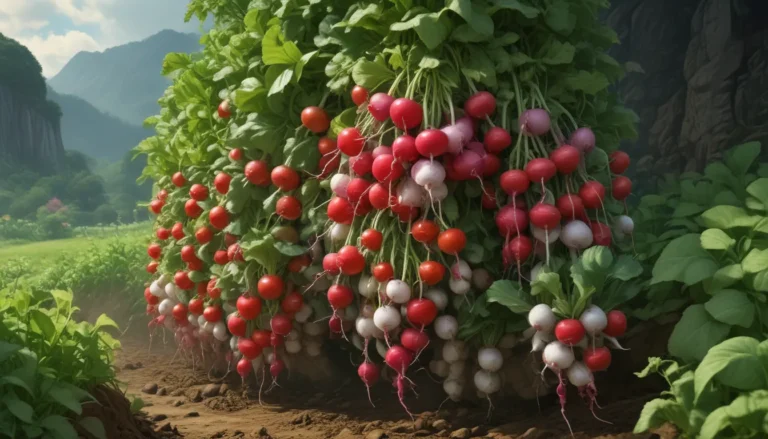Are Ornamental Sweet Potatoes Edible?

Are you curious about whether you can eat ornamental sweet potatoes? Let’s dive into whether these beautiful plants can also serve as a delicious addition to your plate!
Understanding Ornamental Sweet Potatoes
Ornamental sweet potatoes are popular for their vibrant green or purple leaves, making them a great choice for both indoor and outdoor decoration. While these plants are related to the sweet potatoes we commonly enjoy as a root vegetable, ornamental varieties are primarily grown for their visual appeal rather than for consumption.
In addition to their eye-catching leaves, these plants also produce tubers similar to regular sweet potatoes but are generally less fleshy. These tubers can be propagated easily to start new plants, making them a simple and attractive addition to your garden.
With a variety of colors and leaf shapes available, ornamental sweet potatoes come in different foliage shades such as green, purple, and variegated. Some varieties have heart-shaped leaves, while others resemble those of a maple tree.
Notable Cultivars:
- Sweet Caroline™ ‘Light Green’: A bright green variety available from the Sweet Caroline™ Series by Proven Winners at Home Depot.
- Sweetheart Jet Black: A deep purple variety from the same series, also available at Home Depot.
While they make a lovely addition to your garden, are ornamental sweet potatoes more than just decorative plants? Let’s find out!
Exploring Edibility
Yes, ornamental sweet potatoes are edible, but with some caveats. The roots of these plants, while not poisonous, are much more bitter than the sweet potatoes cultivated for consumption. If you’re looking for flavor and a satisfying meal, opting for edible sweet potato varieties specifically bred for taste is recommended.
However, the leaves and stems of ornamental sweet potato vines are where things get interesting. In various parts of the world, these parts of the plant are enjoyed as a delicious vegetable. In fact, they are a popular ingredient in salads, stir-fries, and even fried in fritters.
Different cultures have unique ways of preparing these edible parts of the plant. For example, in the Philippines, the foliage is commonly known as kamote tops, while in Korea, dishes like goguma julgi bokkeum feature stir-fried sweet potato vine stems.
Notable Edible Varieties:
- Centennial: A variety known for its sweet tubers, great for planting and harvesting for food.
Therefore, while the roots may not be palatable, the leaves and stems of ornamental sweet potatoes can bring a new dimension of flavor and variety to your culinary adventures.
Nutritional Value and Health Benefits
The decorative foliage of ornamental sweet potatoes isn’t just visually appealing—it also packs a nutritional punch. Sweet potato leaves are rich in micronutrients such as magnesium, potassium, vitamin A, and lutein. These compounds contribute to the health benefits of these edible parts of the plant.
The combination of vitamin A and lutein present in sweet potato leaves is particularly beneficial for eye health, protecting against cell damage and maintaining retinal health. Moreover, lutein might offer protection against certain types of cancer and have anti-inflammatory effects in the body.
Studies on a variety of leafy sweet potatoes grown in China, known for their edible leaves and shoots, have shown high levels of anthocyanins. These antioxidant flavonoids, found in purple ornamental cultivars as well, may have positive effects such as lowering blood sugar and preventing cardiovascular disease.
While tubers from ornamental sweet potatoes have not been extensively studied for their nutritional content, it’s likely that they share similar properties with those cultivated for eating.
A Word of Caution:
It’s essential to be cautious when consuming any part of ornamental sweet potatoes. Ensure they haven’t been treated with harmful chemicals before incorporating them into your diet.
In conclusion, while ornamental sweet potatoes may not be the first choice for a tasty meal, their decorative foliage and edible leaves offer a unique and healthy contribution to your culinary creations.
Will you experiment with cooking up some sweet potato leaves and stems? Share your favorite recipes in the comments below!
If you’re keen on exploring more about sweet potatoes, consider checking out these related articles:
- How to Grow Your Own Sweet Potatoes
- How to Harvest and Store Sweet Potatoes
Remember to consult a medical professional before making significant changes to your diet or incorporating new supplements into your routine. And as always, enjoy the journey of culinary exploration with ornamental sweet potatoes!





